Welcoming Visitors Tuesday – Sunday, 10AM – 4PM. Admission by donation.
The privilege of Leighton Art Centre’s presence on 80 acres of foothills landscape within Treaty 7 territory is combined with respect, humility, and responsibility to be caretakers of the land. We acknowledge the people of these ancestral and traditional lands, which include the Niitsitapi – Blackfoot Confederacy – comprised of the Siksika, Kainai, and Piikani; the îyârhe Nakoda – Stoney Nakoda – including the Chiniki, Bearspaw, and Goodstoney First Nations; as well as the Tsuut’ina First Nation and Otipemisiwak Métis Nation of Alberta, Region 3. We also recognize that many more First Nations, Métis, and Inuit have marked these lands with their footsteps. We are grateful for all people who make their home in, or visit, the Treaty 7 territory of Southern Alberta, and who act as respectful stewards to this land, where we learn, create, and build relationships in meaningful ways.
Alfred Crocker Leighton was born the eldest of three sons to Charles and Frances Leighton in Hastings, Sussex on October 27, 1900. He was interested in art from a young age, exhibiting his first paintings in his early teens, and he attended the Hastings School of Art at the Brassey Institute on scholarship under the tutelage of E. Leslie Badham (1873-1944). A.C. enlisted in the United Kingdom’s Royal Air Force in November 1918, where he was injured during a training flight and discharged in April 1919. He became toy designer for the peacetime works of the British engineering company Vickers and set up an art studio in London. In 1924, A.C., along with a working partner, constructed a working–scale model of the port of Liverpool which received wide acclaim. According to Barbara, this model was seen by a staff member of the Canadian Pacific Railway who was so impressed that he recommended A.C. for a job.
A.C. came to Canada for the first time with Canadian Pacific in 1924, and he produced volumes of commercial art for C.P. posters and pamphlets. The stories that his friends and colleagues told about this period of A.C.’s life are dramatic – as legend would have it, A.C. would tumble from cliffs with his horse and even jump from moving trains in his quest to sketch the Rockies from the perfect vantage point. C.P. Rail retained many of the paintings that A.C. made during this time, and A.C. eked out a living by showing and selling the remainder. Unfortunately, the bulk of the company collection of original A.C. paintings, held in its London office, were destroyed during the Second World War.
A.C. made his next trip to Canada in 1927, where exhibitions of his work were shown at the Banff Springs Hotel and the Calgary Public Library. In 1929, Leighton received full membership to the Royal British Academy and returned to Canada a third time to continue sketching in the Rockies. That year, he was invited to hold an exhibition in the Eaton’s department stores in Montreal, Toronto, Hamilton, Winnipeg and Saskatoon.
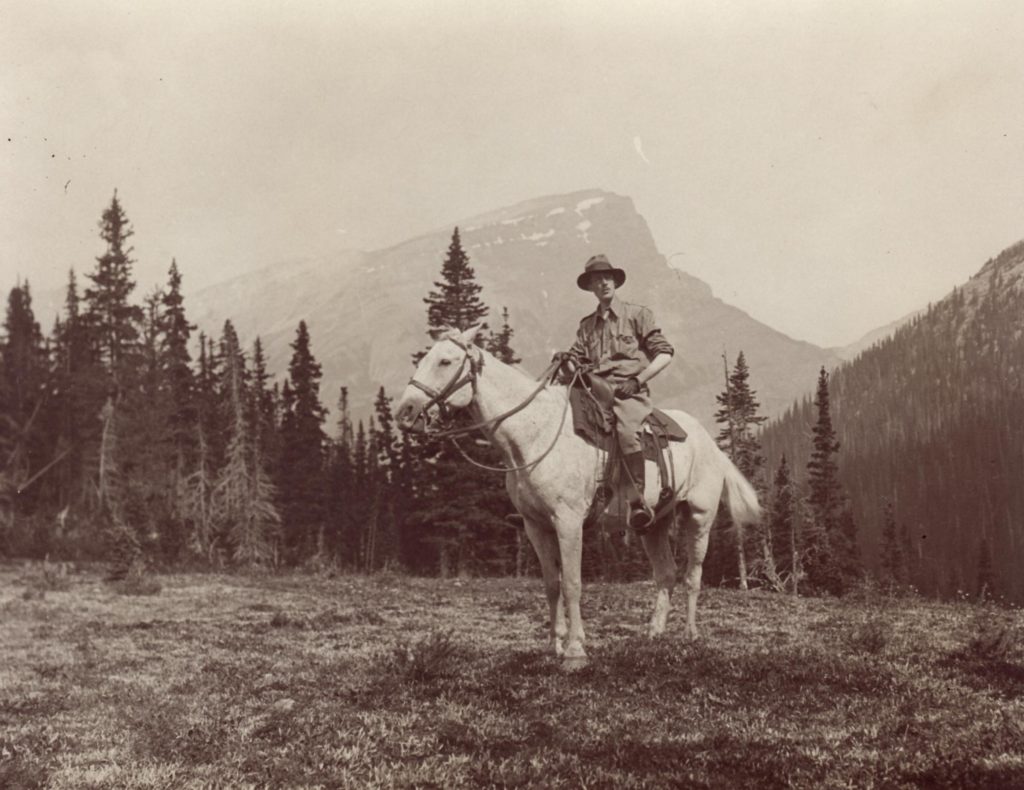
A.C. Leighton on trail ride. 1920’s. Leighton Art Centre archives.
In November 1929, A.C. Leighton was offered the position as Art Director of the Provincial Institute of Technology and Art, a position that led him to permanently settle in Calgary.
Born Barbara Mary Harvey in Plymouth, England in 1909, she became a Canadian early when her family moved to Alberta in 1912. Barbara was involved in many activities during her childhood in Calgary, joining the Sunalta Girls’ Physical Training Class and playing guard for her High School intramural basketball team. Barbara also displayed an early artistic talent talent, winning an award for her plants and cut flowers at the Calgary Exhibition at 13 years old. She attended South Calgary High School, now the location of cSPACE King Edward in Marda Loop, from 1924 until 1928. At twenty, Barbara enrolled in night art classes at Alberta’s Provincial Institute of Technology and Art, where she would meet A.C. Leighton.
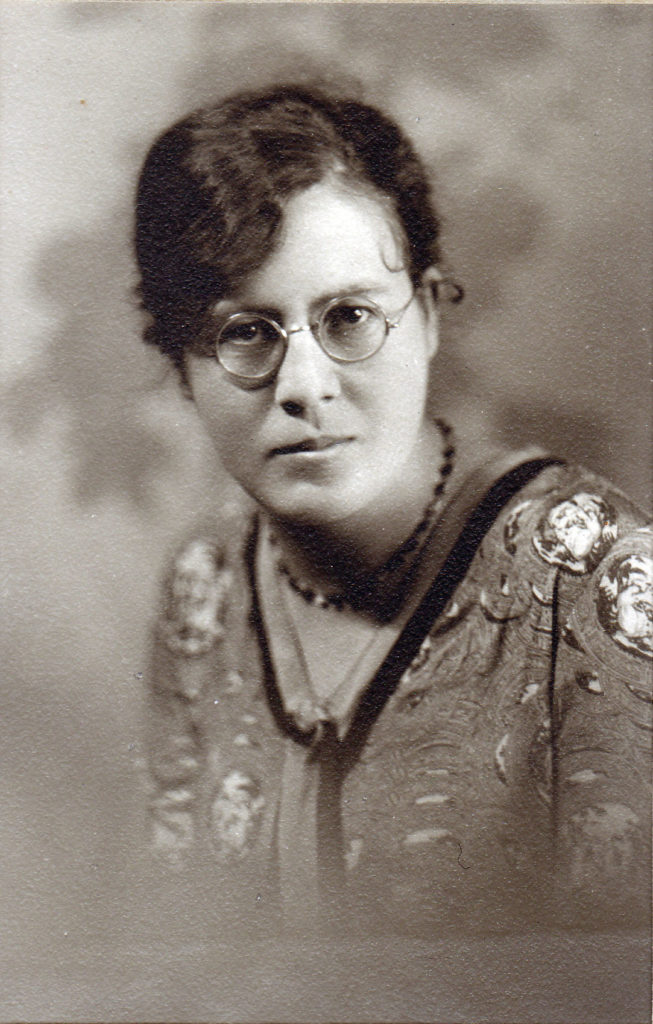
Barbara Mary Harvey. nd. Leighton Art Centre archives.
A.C. and Barbara met in 1930 in one of A.C.’s art classes. They were married in the early morning on Sunday, May 31, 1931, and immediately set off on their camping honeymoon into Kananaskis on horseback to paint.
In 1931, A.C. Leighton helped to form the Alberta Society of Artists, temporarily acting as the organization’s inaugural president. That year, the Edmonton Museum of Art held a joint exhibition of the works of A.C. Leighton and W.J. Phillips.
Throughout the 1930s, A.C. Leighton spent his time teaching in Alberta and exhibiting throughout Canada. In 1931, he taught a summer term art class in Seebe through the University of Alberta which was moved to Banff in 1933. This sketching class was later merged with the Banff School for Fine Arts (now the Banff Centre for Arts and Creativity), helping to establish its visual arts program.
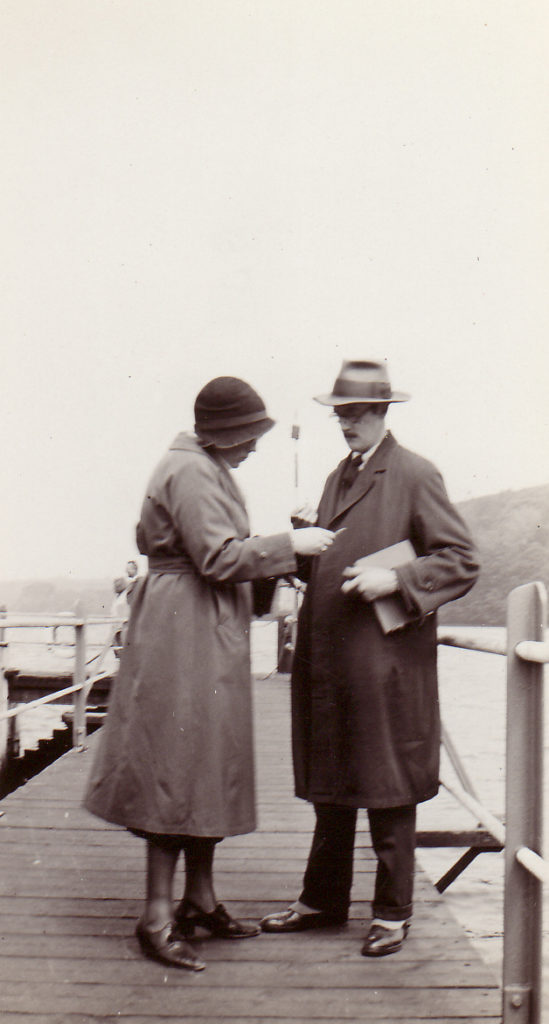
A.C. and Barbara on the road. 1930’s. Leighton Centre archives.
In 1935, A.C.’s work was exhibited at the Vancouver Art Gallery. The years of teaching throughout the day and night, however, were beginning to take a toll on A.C.’s health. The Leightons decided to take a trip to England for a rest. Although enamoured with teaching, A.C.’s health inhibited his ability to continue, and he permanently resigned from his position at P.I.T.A. in 1938.
Around 1940, Barbara began to make linocut art prints for extra income, many of them based on A.C.’s sought-after mountain landscapes and nautical scenes. She signed these “Barleigh,” a combination of her first and last name, linking the paintings to Leighton’s originals while also imprinting them with her own identity. The prints were a hit—they sold well through department stores such as Eaton’s, and were often given as gifts to dignitaries and public figures. In 1942, she was elected a member of the Canadian Society of Painter-Etchers and Engravers.
In 1941, the Leightons moved to a farm in Chilliwack, British Columbia. They built an Arts and Crafts-style house in Surrey’s Crescent Beach neighbourhood.
Although the Leightons enjoyed the mild climate on the coast, they missed the clear, open skies of the prairies – in part because A.C. loved making daily paintings of clouds arranged against the blue sky. They moved back to Calgary, built another house at the intersection of 35th Avenue and 4th Street N. W., and resumed their sketching trips to the mountains and foothills.
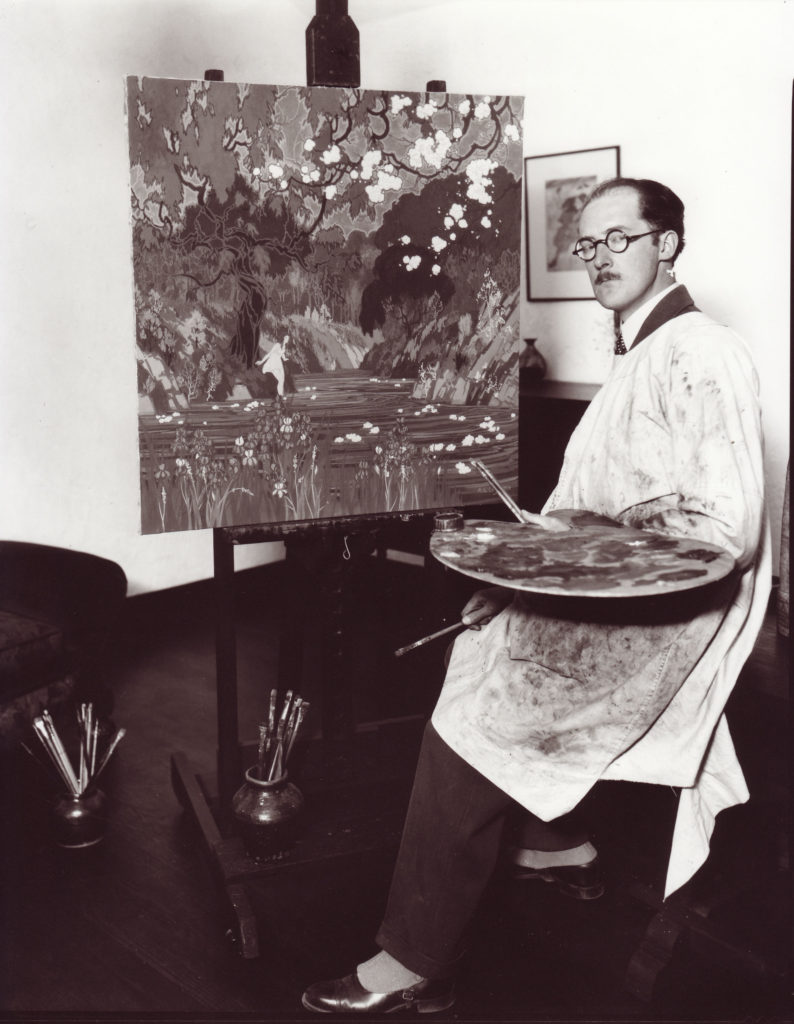
A.C. Leighton at easel. nd. Leighton Art Centre archives.
In 1950, the Leightons returned to England for almost two and half years, seeking medical care for the health problems that still plagued A.C. When they returned to Calgary, they found a large property for sale in the Millarville area with a sweeping view of the foothills and an arresting panorama of the Rocky Mountains. On June 15, 1952, the Leightons became its new owners, naming the site “Ballyhamage” after a small one room schoolhouse that had once occupied the property. Here, on the current site of the Leighton Art Centre, they began the construction of a new home and studio.
While the new house, inspired by the styles of the Arts and Crafts period like their previous homes, was constructed in stages, A.C. obsessively painted the Rockies. Many of the paintings he left behind depict this property’s expansive western-facing view. Around 1960, after A.C. received his inheritance from his father’s estate, the house was completed.
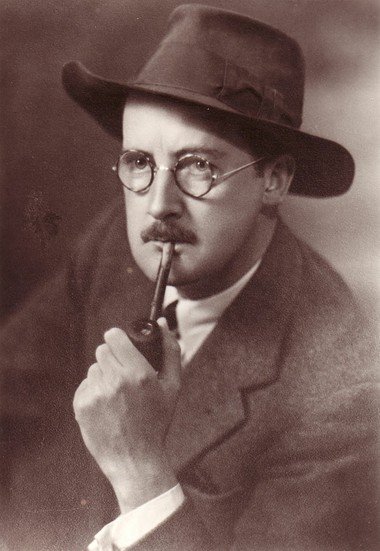
Alfred Crocker Leighton. nd. Leighton Art Centre archives.
A.C.’s health, however, was rapidly deteriorating, and he made his last trip to England in 1962. He was admitted to the General Hospital in Calgary in May of 1965 where he passed away. He is buried at Millarville, Alberta, not too far from Ballyhamage, with his tombstone bearing the date of birth 1901, one year off from that on his birth certificate.
Not wanting to “sit around and feel sorry for herself,” Barbara Leighton enrolled at the Alberta College of Art (now the Alberta University of the Arts) in the late 1960s, where she won scholarships in Visual Arts two years in a row and received a diploma in fibre and metal crafts in 1969. Her fabric and metal work from this period departed from the English traditionalism of A.C.’s landscape watercolours. Visible in her pieces is an embrace of the emergent prairie modernism gaining force in Alberta in the 1960s and 1970s, though she maintained the reverence for nature that is apparent in her careful woodcuts of forest and prairie scenes.
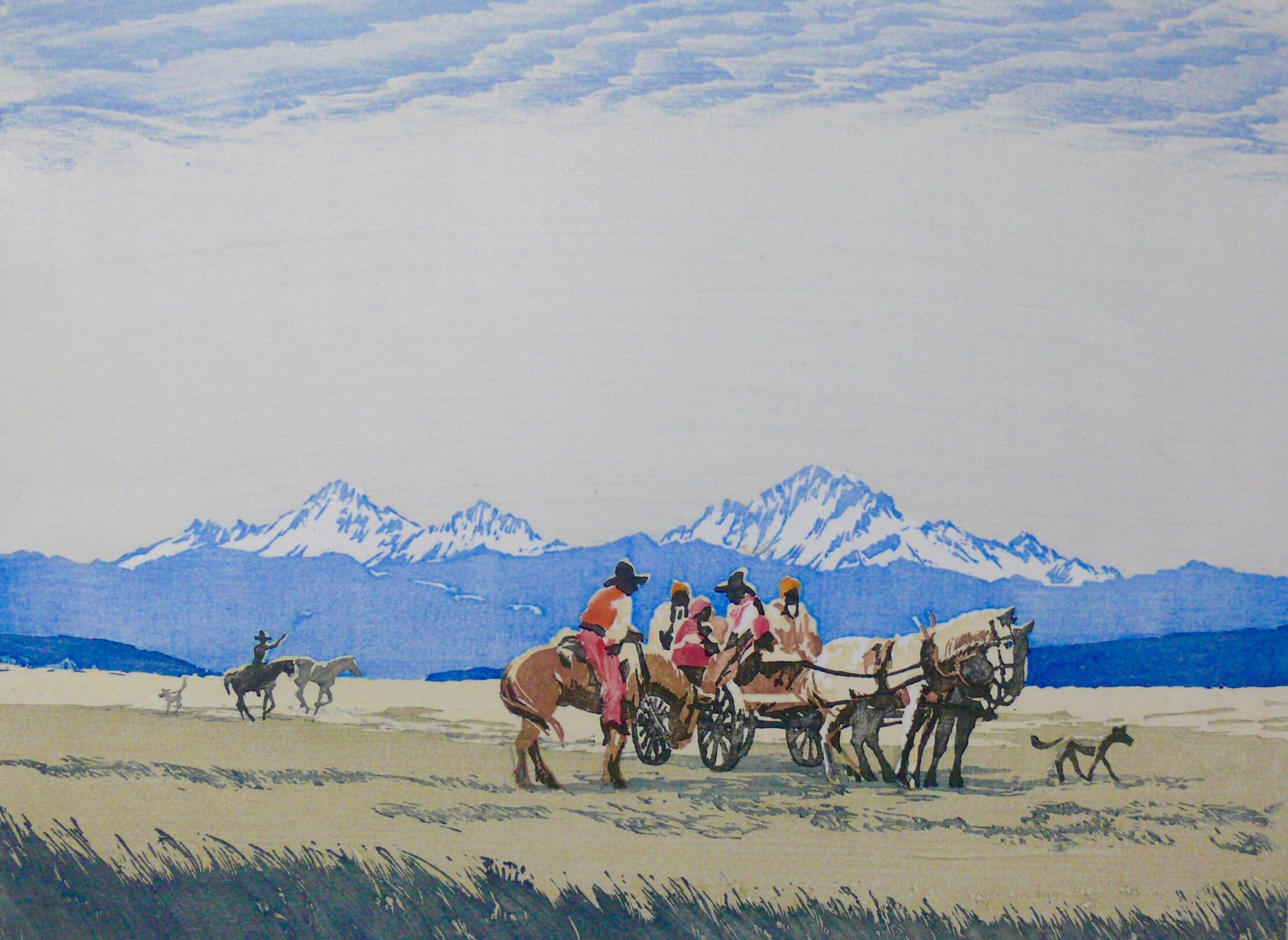
Range Gossip, Barbara Harvey Leighton Canadian C.P.E., A.S.A. [1911-1986] Colour woodcut on paper, Ed. #11/100 10 3/4 x 14 3/4 ins.
In 1970, Barbara sold half of her quarter-section to invest in her dream of opening her own school, where classes in art and craft would cater to the surrounding community. That year, she purchased the historic 1919 Ballyhamage one-room schoolhouse for $1,000 and many of her friends pitched in to help restore the space and fit it out as an art studio. A few years later, she added a weaving studio and pottery studio, making the school a veritable campus that offered a variety of programming. The red one-room schoolhouse remains to this day the heart of the Centre’s children’s programs.
The Leighton Centre was officially incorporated in 1974. The Centre had quickly become a gathering place for artists of all ages and levels. Hundreds of guests came from Calgary and across Alberta to learn artistic techniques from Barbara and her colleagues while exploring the beauty of the Leightons’ home and surrounding landscape. Barbara turned her home into a gallery and museum that exhibited her large collection of A.C.’s paintings alongside a growing collection of works by other prominent artists from throughout Alberta’s history including Margaret Shelton, Stan Perrott, Barbara Ballachey, Jim and Marion Nicoll, Annemarie Schmid-Esler, Rick Grandmaison, Janet Mitchell, Roland Gissing, Katie Ohe, lllingworth Kerr, and Richard Roenisch.
Read a 1979 Western Living Magazine article about Barbara Leighton and the history of Leighton Art Centre.

Barbara (right) and friends in the Schoolhouse Studio. 1970’s. Leighton Art Centre archives.
Notifications